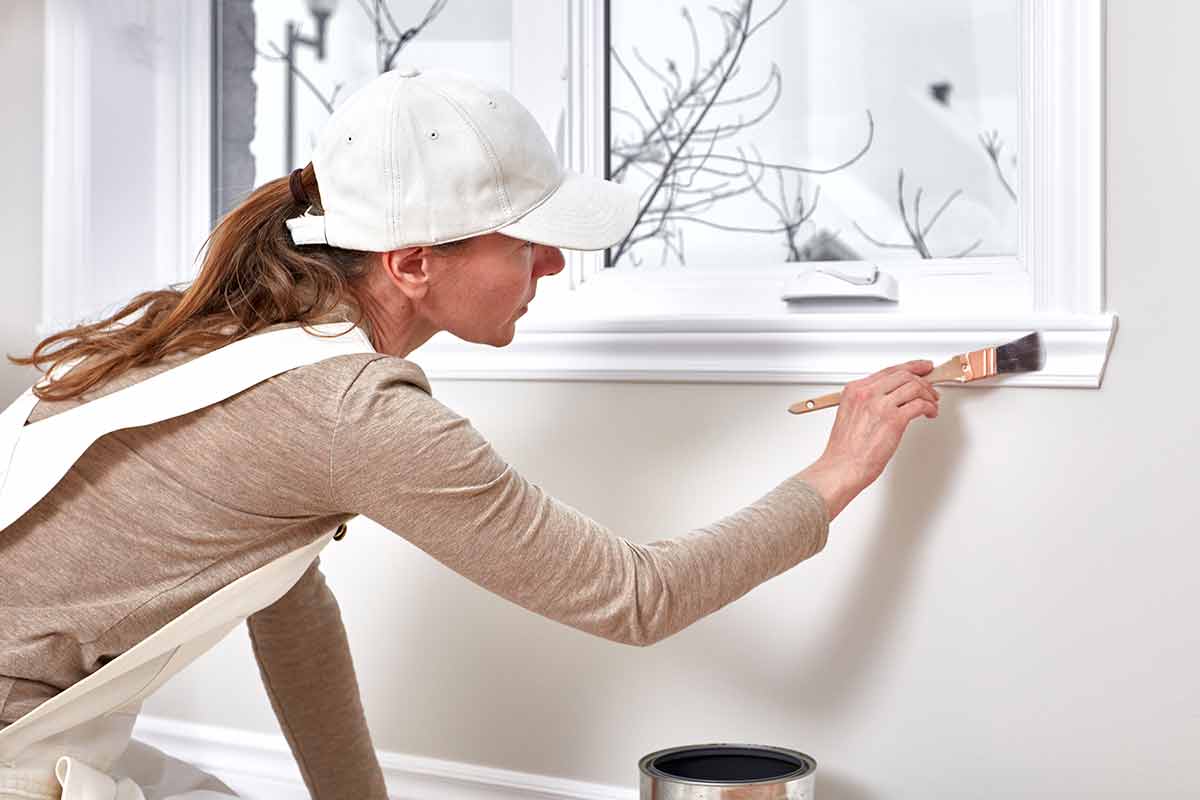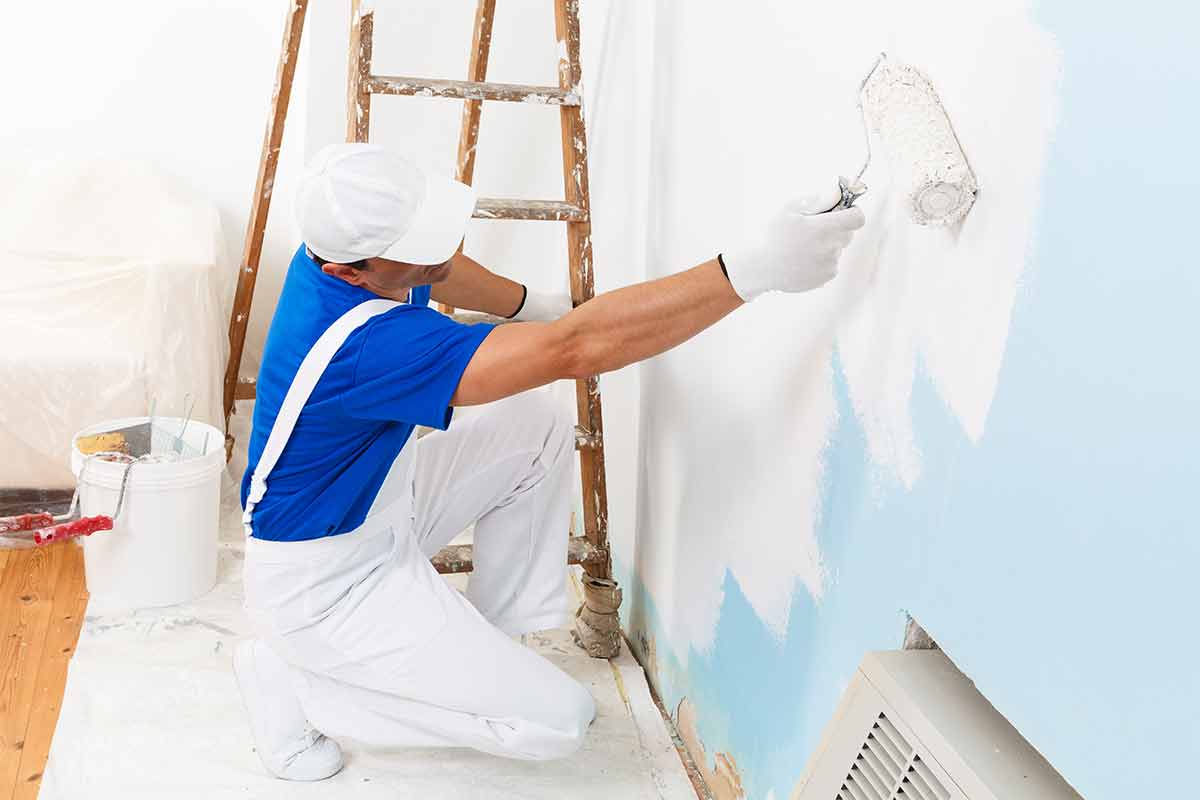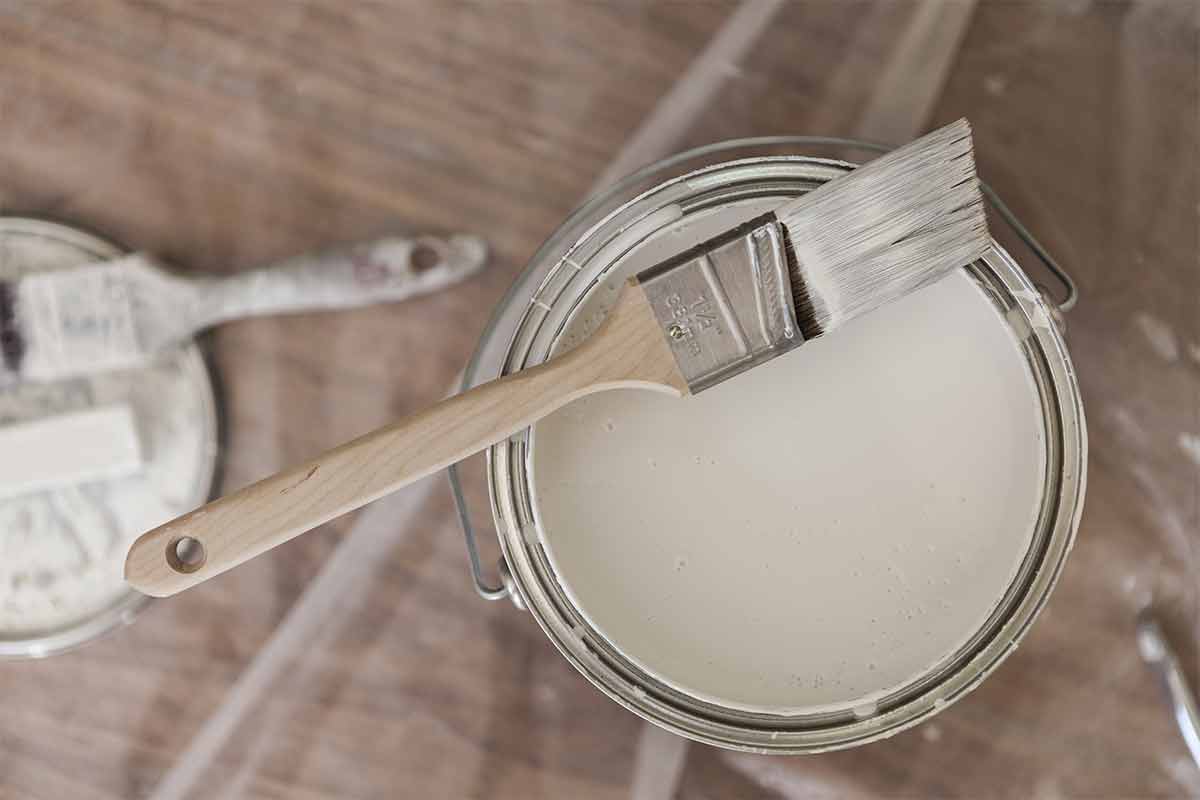Our companies are backed by the Best Pick Guarantee. Call one today!
For many homeowners, painting is the remodeling project of choice. After all, a fresh coat of paint is relatively inexpensive and can transform the look and feel of a room in the space of a weekend.
However, while we tend to spend a considerable amount of time mulling over color and finish, most homeowners don’t give a second thought to the impact paint choice can have on public health and that of the environment.
In this article, learn why more and more professional painters are switching from oil-based to water-based paint, why the latter is the more environmentally friendly option, and other green practices to keep in mind during you next painting project.
VOC Regulations
As they dry, oil-based paints release volatile organic compounds, or VOCs, into the atmosphere. VOCs are a major contributor to the formation of ground-level ozone, the primary component of “smog.” In order to reduce ozone levels, the EPA and several state agencies passed legislation limiting the amount of VOCs that can be used in various household products, including commercial cleaners, aerosol sprays, and architectural paints.
If you live in one of several states—including California and much of the eastern seaboard—you may have noticed the disappearance of oil-based paint (also called “solvent-based” or “alkyd”) from the shelves of your local paint supplier. Or you may not have; unless you’re a professional painter, the difference isn’t readily apparent.
For more information on VOC regulations by state, visit the Adhesive and Sealant Council’s website.
Characteristics of Oil-Based (Solvent-Based) Paint

Because of the regulations combatting VOCs, as well as advances in paint technology, most professional painters have made the change from oil-based to water-based paint. However, some painters operating in states with lower regulations still prefer oil-based products.
When hiring a professional painter, you may want to inquire which type of paint they plan to use and why. Certain circumstances call for oil-based coatings; for example, a painter may apply an oil-based primer to a water stain to prevent the stain from bleeding through the topcoat.
Pros:
- Less susceptible to environmental conditions, such as temperature and humidity
- Excellent resistance to wear and tear
- Able to produce a very smooth, high-gloss finish with little to no brush marks
Cons:
- Contains high levels of VOCs
- Specific cleanup requirements (using turpentine or mineral spirits)
- Strong chemical odor
- Longer drying period
- Restricted range of color options
- Less flexible; cracks and becomes brittle over time
- Poor UV durability; becomes chalky and faded in less time
Best uses
- Window frames: Windows painted with oil-based paint don’t tend to stick when opened and closed.
- Baseboards: Because baseboards see a lot of abuse, many painters use oil-based paint, which holds up well against scrapes and dings from the vacuum.
- Trim: For a bright, glass-smooth finish, painters will commonly use oil-based paint to make exterior and interior trim pop.
Characteristics of Water-Based (Acrylic) Paint

Fifty years ago, nearly all architectural paint was oil-based. Today, however, water-based paint has developed in quality and performance to the point of replacing oil-based paints as the industry standard—and it’s gentler on the environment.
For an easy way to distinguish water-based from oil-based paint, check the label for cleaning instructions. Water-based paint can be easily cleaned from brushes with soap and water; oil-based paint requires mineral spirits or turpentine for cleaning.
Pros:
- Zero or low levels of VOCs
- Less odor
- Easy cleanup
- Faster drying time
- Full range of color options
- More flexible; tolerant of surface expansion and contraction without cracking
- Excellent UV durability; resistant to chalking and color fade
Cons:
- Prone to chipping; not always suitable for areas that receive heavy wear and tear
- Does not produce as smooth or glossy a finish
- Not always suitable for use in wet climates; high humidity can prevent water-based paints from drying fully
Best uses
- Interior walls: For the most part, water-based is the best interior paint option. Its rapid drying time means painters can complete two coats in one day, and simple cleanup, low odor, and low VOCs make it both the professional’s and the DIY-er’s paint of choice.
- Exteriors: Water-based paint is also preferred for its exterior durability in most climates. It’s more pliant, and colors last longer before fading.
- Masonry: Because of its resistance to alkalis, water-based paint adheres better and lasts longer on brick, stone, concrete, and plaster structures.
Eco-Friendly Painting Practices

Beyond choosing low-VOC paint, there are several ways a conscious homeowner can ensure they produce as little waste and pollutants as possible when completing a paint job:
Use quality tools and clean them properly. Buying cheap brushes and rollers means inevitably throwing them out, replacing them, and tossing them again. Well cared-for, high-quality tools will not only last longer, but they will also likely produce a smoother, better-looking finish.
Buy only what you need. A smart contractor will only buy the necessary materials for a job. If you’re completing the work yourself, use a paint calculator or consult the opinion of a paint store expert before purchasing. It’s better to under-buy than overestimate; if you run out, you can always buy more.
Recycle or safely dispose of materials. If you end up with leftover paint, find another use for it around the house, or donate it to a school, church, or a local Habitat for Humanity. Take empty or dried paint cans to a county hazardous waste landfill to dispose of them safely; in many municipalities, homeowners don’t pay for disposal.
When working with a professional painting company, speak with a representative about the type of paint they plan to use as well as their disposal, repurposing, and cleaning practices. A contractor should never rinse brushes outside with a hose, as this causes chemical runoff, but should instead use a customer-designated sink or return to their facility for cleanup.
If doing your part for the environment is important to you, the company you hire should share those values.


























